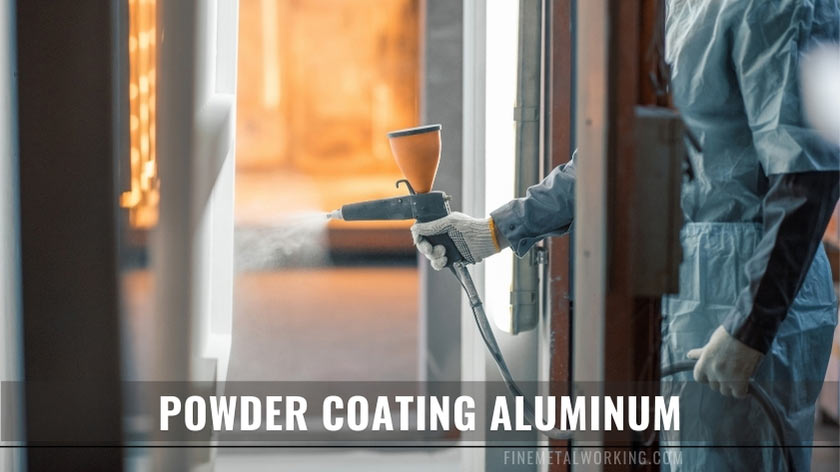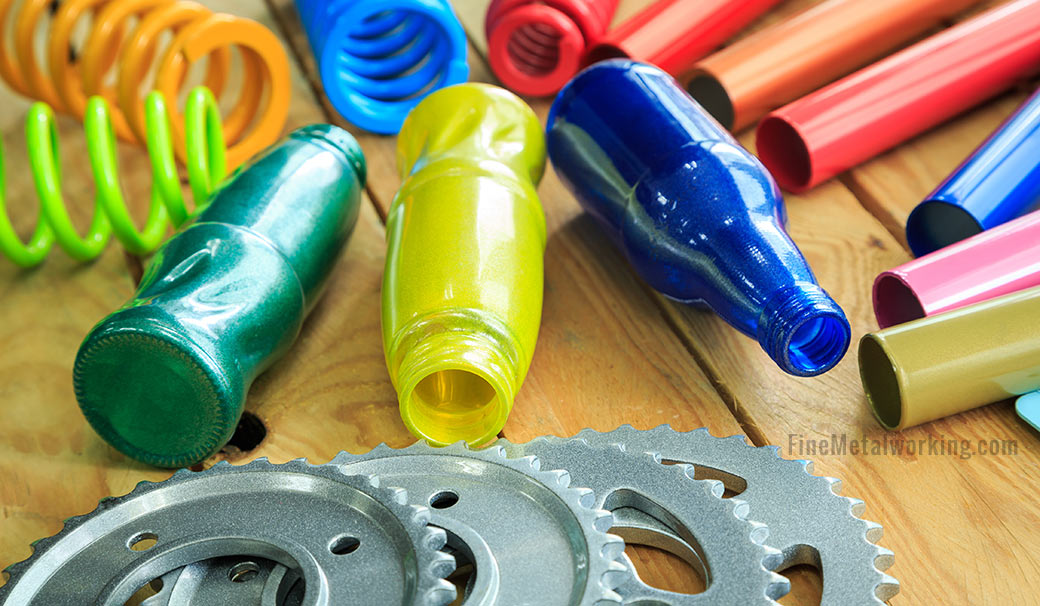Powder coating is a widely used application, protecting metals from corrosion and improving their aesthetic appeal. Can aluminum be powder coated? Is it necessary since aluminum is already corrosion resistant?
Page Contents
Can Aluminum Be Powder Coated?
Yes, aluminum can be powder coated. Some manufacturers warn that the powder coating process could harm the metal’s integrity, but this depends on the powder coating methods being used. When carried out correctly, powder coating will not harm aluminum, and the resultant finish will improve the part’s corrosion resistance, wear resistance, and aesthetic properties.
Why Powder Coat Aluminum?
Aluminum is a lightweight metal widely used in both aesthetic and functional applications. While aluminum is naturally corrosion-resistant, some applications call for additional corrosion protection, achieved through powder coating. This process could also improve the metal’s wear resistance, change the color and surface finish, and create a reflective surface.
Aluminum Powder Coating Process
The powder coating process consists of three main parts: pretreatment, powder application, and curing. In this section, we break down each step and analyze essential factors that should be considered.
Pretreatment
During pretreatment, the part to be coated is cleaned in several stages to remove all dirt, grime, and impurities from the surface. This is an essential step since impurities could negatively affect the powder’s adhesion to the surface, ruining the outcome.
Power Washing
When encountering oxygen, a thin layer of aluminum oxide forms on the metal’s surface. For effective powder coating, this layer must be removed through power washing. This exposes the pure metal surface to be coated.
Aqueous Alkaline Cleaning
Next, the part would undergo aqueous alkaline cleaning. Here, the aluminum part is dipped in a solution containing between 2 and 5% sodium compounds. For effective cleaning, a soft-bristle brush is used to gently brush the surface, removing any impurities. This brush should have nylon bristles, not copper or steel since that could damage the surface.
Following this scrubbing, the part is rinsed using warm water or water under pressure. Next, it is dried thoroughly, preferably in a heated environment, ensuring that all excess water is removed from the surface.
Solvent Cleaning
Solvent cleaning follows, removing grease and oil from the part’s surface. Here, mineral spirits or similar cleaning chemicals are applied to the part using clean rags. Once properly wipes down, the part is rinsed again, using hot water or water under pressure, as before. The part is then dried in a heated environment, ensuring completely dry before commencing the next step.
Hand Cleaning
If any obvious dirt remains on the part, it can be cleaned by hand or by using a power tool. Again, the part should be rinsed and thoroughly dried before carrying out the next step.
Surface Preparation
Here, any remaining aluminum oxide is removed from the metal’s surface, and the surface is roughened to improve powder adhesion. To this end, one of two methods is generally used: sweep blasting and phosphate treatment.
Sweep Blasting
During sweep blasting, pressurized air is used to blast abrasive media at the metal’s surface. Aluminum or magnesium silicates are generally used, although various other abrasive media could be used.
Phosphate Treatment
During phosphate treatment, a phosphate solution is applied to the metal’s surface. This can be done through complete immersion, surface spraying, or soft bristle application. Aluminum reacts with this solution, converting the surface into crystalline phosphate coating, which improves powder coating adherence. The process requires between three and six minutes, after which the surface should be thoroughly rinsed with water and dried again. Powder coating should take place immediately after this to prevent any new dirt from attaching to the surface.
Powder Application
During powder coating, electrostatically charges powder particles are flung at the metal’s surface. The aluminum part to be coated is electrostatically grounded. This difference in charge creates attraction between the powder particles and the metal’s surface, allowing them to stick to the surface.
Curing
Once the desired coating thickness is achieved, curing takes place. Here, the part is heated to the desired curing temperature, usually between 350 and 400֯F (176 – 205֯C) for around 10 to 20 minutes. The curing temperature and duration depend on the powder used and the coating thickness.
Coating Thickness on Aluminum
Powder coating varies in thickness depending on the application. Smooth surface layers of between 2 and 4mm are typical. When applying powder coating layers thicker than this, you risk orange peel and pockmark effects. While this is generally not desired, some applications warrant this aesthetic sacrifice, given the extra coating thickness achieved.
Aluminum Powder Coating Colors
Powder coating is available in any color imaginable and in a variety of finishes. These include matt, gloss, satin, high-gloss, super matt, and textured. With the latest technological advances, color gradients are also available.
Does Powder Coating Weaken Aluminum?
While powder coating in itself doesn’t weaken aluminum, some pretreatment processes could. Sweep blasting, or sandblasting, could damage the metal’s surface, especially if the part in question is fragile. Some worry that the heat necessary for curing could damage the metal since aluminum anneals at far lower temperatures than stainless steel. This is unlikely, though, since aluminum anneals at 650֯F (343֯C), and powder coating curing generally requires a maximum of 400֯F (204֯C).
Powder Coating Aluminum vs. Anodizing
Anodizing is an electrochemical process used to improve aluminum’s corrosion resistance. To this end, it increases the aluminum oxide surface layer’s thickness. Anodized parts are easy to maintain through periodic cleaning with water and mild detergent.
Unlike other surface coatings, the anodized layer won’t peel or flake since it’s part of the metal and not just a coating. It is also impervious to sunlight and will thus not fade over time. However, the anodized layer is vulnerable to attack from acidic pollutants, common in urban areas.
Anodized coatings are translucent and are thus limited to matt or gloss finishes with no intended color variation. However, these finishes often vary in color between batches, causing unwanted color variation in architectural projects.
Powder coatings are available in various colors and finishes and are highly consistent between batches. Maintenance is simple – since powder coating is chemically resistant, it can be cleaned using industrial-grade chemicals. Dents and scuffs are also easily repaired using a liquid repair agent.
Both powder coating and anodizing call for correct application. When misapplied, both methods are likely to produce poor surface finishes, with typical streaking and orange peel effect.
Aluminum Powder Coating vs. Paint
Powder coating and painting are the most commonly used surface protection for aluminum. Both are available in a variety of colors and finishes, and both are easily applied. That is where the similarity ends, however.
Powder coating is far thicker than paint. This means that powder coating offers more protection against environmental factors than paint does. It also has greater surface adhesion than paint, making it less likely to chip or flake.
Paint is inflexible. When the metal it’s painted onto vibrates or moves, tiny cracks form in the paint’s surface. This leads to chipping and flaking. Conversely, powder coating is flexible, allowing it to move with the metal. This flexibility makes it far less likely to chip or flake.
Powder coating’s flexibility allows it to absorb surface impacts, such as scratches, nicks, and dents, making it far more hard-wearing than paint.
Some types of paint offer a measure of corrosion resistance, but powder coating is inherently corrosion resistant. Here, again, it offers greater protection than paint.
Is It Better to Powder Coat or Paint Aluminum?
Powder coating outperforms paint in all aspects of surface protection. Since it is more hard-wearing and less likely to chip or flake, it also calls for far less maintenance and reapplication than paint.


